Post Ten - Denmark: Roskilde to the Coast
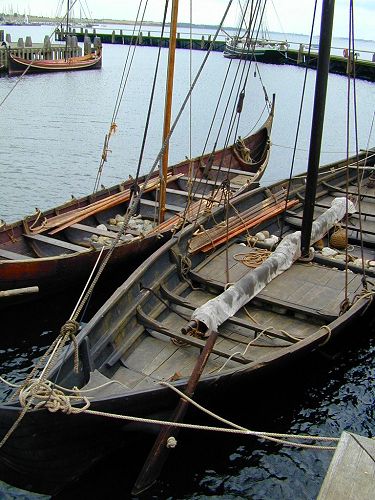 Viking Boat Reproductions, Roskilde Viking Boat Reproductions, RoskildeThe Vikings set out on uncharted waters in boats exactly like this to explore, hunt, plunder, and relocate. They were sophisticated warriors, savvy traders, profit-driven mercenaries, and highly skilled survivors. They raided the lands in Russia (the root of the word "Russia" comes from Rus, a name locals gave to Vikings who settled in modern-day western Russia more than 1,000 years ago), fished in the waters off of Greenland, founded settlements on today's Canadian coast, and settled on the north shores of France, populating it with the Norse men--or "Normans"--who would one day head across the Channel and conquer Britain. At one point, they even sailed down the rivers of France and plundered Paris. And they did it all ships like this. The boats were sturdy, highly maneuverable, extremely practical - revolutionary their time. Even to my ignorant eye, the ships are a model of elegant, efficient design, their wooden planks unmarred by metal, planks split and honed with Iron Age adzes, fitted together by strong, muscled men with a keen eyes and expert hands. |
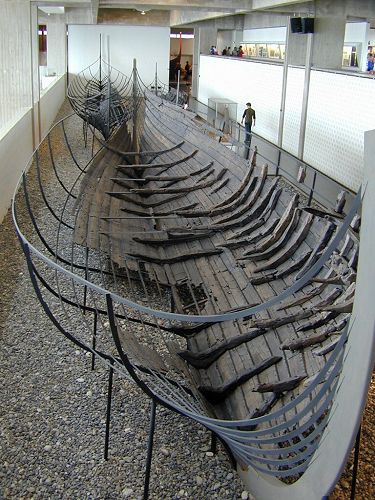 Noble Carcass Noble CarcassLeif Erikson sailed a ship like this to America 1,000 years ago. (Of course, it was in better shape then.) The Roskilde Viking museum houses the remains of five such ships. They were discovered north of Roskilde underwater, stretched across a narrow passage leading into the bay. But this wasn't a shipwreck, or the wreckage from a battle. These ships were carefully positioned, filled with stone, and submerged to form an underwater barricade that would stop, or at least slow, invaders. In the mid-20th century, scientists spent decades carefully unearthing the ships, building walls around the spot where they lay buried, draining the area of water, and carefully moving the ships' remains board by board. Then they submerged each piece in a solution of propylene glycol to stop the wood from disintegrating once it dried. The solution slowly replaced the water, allowing the wood to retain its shape. |
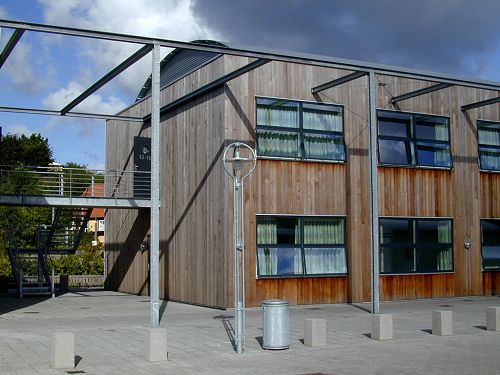 Roskilde Youth Hostel Roskilde Youth HostelThis youth hostel, housed in the same complex as the Viking museum, had the clean, elegant lines typical of Danish architecture. We checked in and decided to improvise for dinner. The convenience store on the pier supplied us with bread, cheese, fleischsalat (bologna, ham, and mayonnaise salad), and Danish beer, and we found "polser," those ubiquitous Danish sausages, at the walk-up hot dog and chips shop down the block. Back in the room, we washed our sausage down with the brews, then strolled the nearby docks of the local marina in the twilight and light rain, admiring boats and the town's neat rows of pretty wooden homes with thatched roofs. |
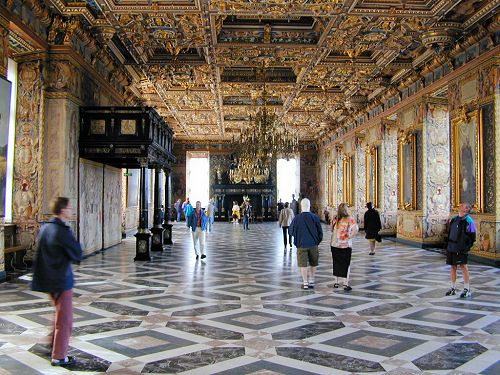 Frederiksborg Castle's Ballroom Frederiksborg Castle's BallroomIf you have time for one castle in Denmark, see this one. Castles are hard to describe, and I'll just say that Frederiksborg Slot was stunning, full of beautiful paintings, carvings, and impressive period furniture. King Frederick II built the castle, and his son, the great Danish king Christian IV, was born here. Imagine attending a ball in this room. The musicians played on the left under the covered area, while the dancers swirled in pairs down the center. On the sidelines, the guests discussed scandals, made political deals, wagered bets, plotted court intrigues, carried on love affairs…. |
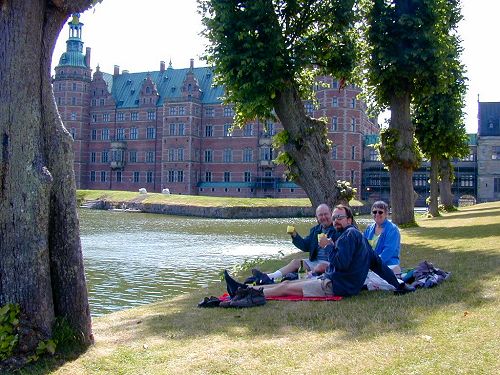 Royal Picnic Royal PicnicEven after just a few days of travel, we were tired of eating in restaurants, and the gardens of Fredricksborg Slot seemed like the ideal place for a picnic. We scoured to the small, local grocery store for cups, a towel, and a wine opener, then bought more food and drink than we could consume on three picnics. This lakeside spot gave us a bird's-eye view of the castle. We split open the bread, sliced the cheese, poured wine, and enjoyed the best picnic I'd been to in a long time. Somehow, wine just tastes better when you're sipping it under the sun, sitting on the grass. And is it my imagination, or are cheese and fruit truly more savory when eaten in the open air? |
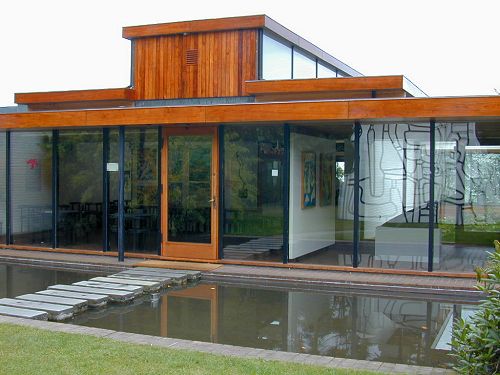 Louisiana in Denmark Louisiana in DenmarkSweden, Norway, and Finland were calling! Yet we kept finding amazing sights to keep us just a few hours longer in Denmark. Karen Blixen's house was one of those places; it was a fascinating insight into the life and work of the woman most famous for writing "Out of Africa" under the pseudonym Isak Dinesen. Another jewel, pictured here, was the Louisiana Museum of Modern Art. This museum was designed holistically, with every room, hallway, and window placed to display art beautifully, with lots of natural light and harmonious spaces. Even if you hate modern art, this museum might just renew your faith in it. |
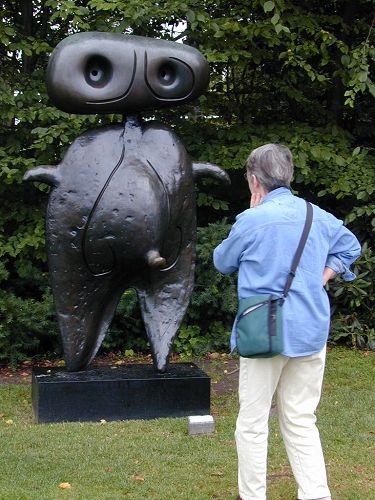 Mom Contemplates Miro Mom Contemplates MiroI think the statue is Jean Miro. I know the gazer is my mother. She was so deep in thought - or maybe she was just puzzled, or amused - she didn't even realize that Scott was snapping this picture. |
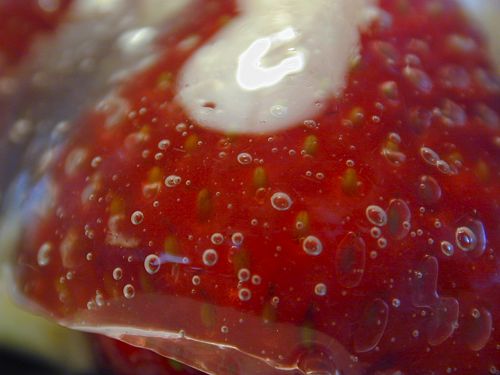 Afternoon Coffee Afternoon CoffeeMy parents, ever the flexible, spontaneous traveling companions, have one regimented, unavoidable daily ritual: afternoon coffee. This tart sat like a jewel in a case in the Louisiana café, tempting us to eat it with a cup of strong, black, Scandinavian-style coffee. Vanilla custard in a chocolate-covered graham-style crust cradled these berries. I don't know who ordered this, Scott or I. But I can always count on him to split something with me. We found ourselves often having lunch or coffee and cake in the museum cafes across Scandinavia. The "buffets" you often find in the States bear no resemblance to the fresh, varied offerings on Scandinavian smorgasbords. And, contrary to what we heard about bad coffee in Scandinavia, just about every cup we ordered was fresh, hot, and tasty. |
Next Up: Sweden's West Coast
Copyright 2001
Scott & Karen Semyan